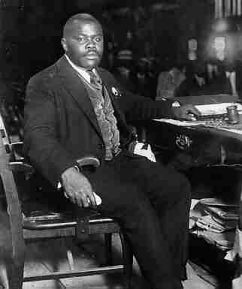The other day I was at a local supermarket when I saw a young man wearing a jacket that intrigued me. On the back of this "badass" jacket were emblems and the words "Ancient Egyptian Arabic Order [couldn't make out next words except the last] Mystic Shrine".
I was fascinated, and so I wrote down the words. When I got home, I looked up the words on the Internet.
What I found was a story of a masonic order called "Ancient Egyptian Arabic Order of Nobles of the Mystic Shrine". Now I'm not sure if this order of the Mystic Shrine is the same as the shrine signified on the back of the young man's jacket, but the story I found is indeed intriguing, and I think you'll find the following [from Legal Information Institute] very interesting.
"279 U.S. 737 (49 S.Ct. 485, 73 L.Ed. 931)
ANCIENT EGYPTIAN ARABIC ORDER OF NOBLES OF THE MYSTIC SHRINE et al. v. MICHAUX et al.
No. 7.
Argued: Jan. 12 and 13, 1929.
Decided: June 3, 1929.
- opinion, VAN [HTML]
Messrs. Harold S. Davis, of Boston, Mass., James E. White and Samuel A. T. Watkins, both of Chicago, Ill., and Moorfield Storey, of Boston, Mass., for petitioners.
Mr. Claude Pollard, of Austin, Tex., for respondents.
TOP"
RELATED:
"Mr. Justice VAN DEVANTER delivered the opinion of the Court.
This case presents a controversy between two fraternal orders, called 'Nobles of the Mystic Shrine,' one having white and the other negro members. A short reference to the origin and history of these orders will conduce to an accurate appreciation of the controversy.
From early times there have been two distinct Masonic fraternities in the United States, one confined to white men and the other to negroes. Each has had its local lodges, grand lodges, and Supreme Lodge, and also several component bodies, including Knights Templar and Scottish Rite consistories. Both have existed in the same territory and have had similar names, rituals, and emblems, and yet have been independent and without any interrelation. The white fraternity's existence in this country reaches back to early colonial times. The negro fraternity was organized in Boston in 1784, and afterwards was extended to other sections.
The orders called 'Nobles of the Mystic Shrine' are relatively modern, originated in the United States, and are outgrowths of the Masonic fraternities just described. They were founded by Masons, and their membership is restricted to Masons-white in one case and negro in the other-who have become Knights Templars or have received the thirty-second degree in a Scottish Rite consistory. The white Masons were the first to establish an order of Nobles of the Mystic Shrine. They organized one in New York in 1872 for fraternal and charitable purposes. The order grew rapidly, and soon came to have local lodges, called temples, in most of the states, and also to have a national governing body called its Imperial Council. The negro Masons imitatively organized a like order for like purposes in Chicago in 1893. It also grew, although not so rapidly as the white order, and came to have many local temples in other sections of the country and to have a national governing body called its Imperial Council. The constitution, emblems and regalia of the negro order, as also the titles given to the officers of its temples and council, were all adopted in imitation of those of the white order. Another feature imitatively copied was a purely fanciful calim, once put forth by the white order and afterwards discredited, to the effect that that order was an authorized extension of an ancient and illustrious order established centuries ago in Mohammedan countries.
Each of the orders, after becoming well organized, made it a practice to hold periodic national meetings attended with public parades and other features tending to bring attention to the order and to advance its extension. And, aside from such activities, each publicly engaged in commendable charitable work. The white order, by reason of its greater membership and the larger resources of its members, was able to carry that work further than the negro order could, but the contributions and efforts of the latter in that field were both helpful and substantial."
CONTINUED HERE
RELATED:
Moorish Circle 7 by Keith Moore




